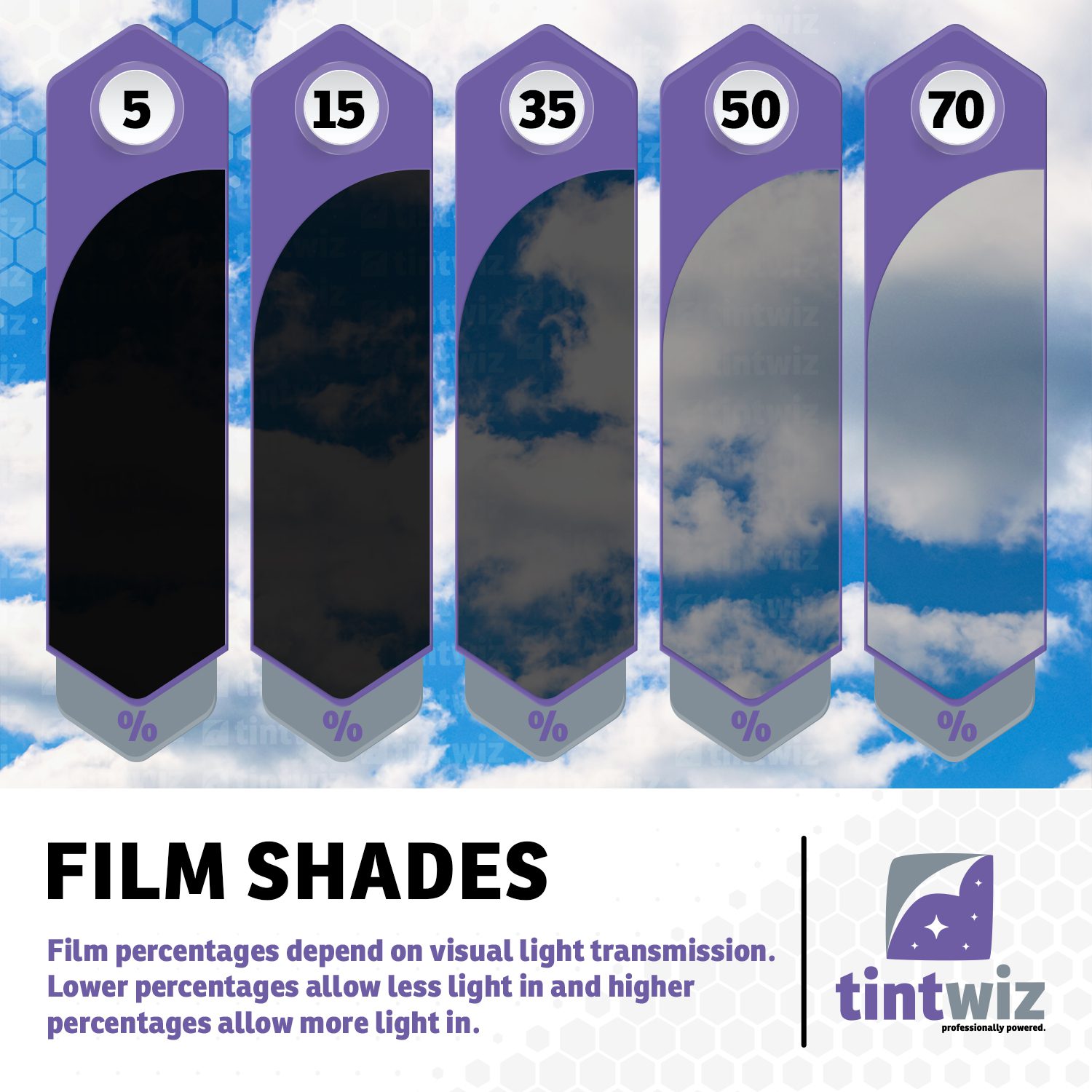Darkest legal tint for Cars in Montana
- Windshield: Non-reflective tint is allowed above the manufacturer’s AS-1 line.
- Front Side windows: Must allow more than 24% of light in.
- Back Side windows: Must allow more than 14% of light in
- Rear window: Must allow more than 14% of light in
Darkest legal tint for SUV and Vans in Montana
- Windshield: Non-reflective tint is allowed above the manufacturer’s AS-1 line.
- Front Side windows: Must allow more than 24% of light in.
- Back Side windows: Any darkness can be used
- Rear window: Any darkness can be used
Please note: The accuracy, completeness, adequacy or currency of the content is not warranted or guaranteed. We are not lawyers or a law firm and we do not provide legal advice. We recommend you consult a lawyer or other appropriate professional if you want legal advice.

Montana automobile window tint laws have been in place since 1991 and were heavily amended and updated in 2007 to align with modern developments in window film technology. Make sure that your car, truck, or SUV has legal window tint in Montana by knowing the VLT – or visible light transmission – percentage of each tinted window. VLT simply refers to how light or dark (see through or private, e.g.) a window is, and note that VLT restrictions are different for different types of vehicle. We will break down the specifics below.
Auto window tint is a wise investment for anyone who cares both about the short term performance and looks of a car as well as about the long term value of a vehicle. In Montana car tint adds privacy and style the same day it’s added and it cuts interior heat even on the longest, sunniest days of a Big Sky Country summer day, making your car cooler and more cost effective. Long term, window tint rejects 99% of the UV light that causes interior fading and cracking to upholstery and hard surfaces (and that causes skin damage) so your car will better retain its looks and its resale value.
The question is not whether or not car window tint is a great investment; it’s simply a matter of making sure your auto window tint is legal in Montana so you don’t risk the cost of a window tint ticket that can greatly offset the value of that investment.
Legal Windshield Tint in Montana
As in many states, the laws regarding windshield window tint in Montana are clear and easy to understand: you may apply non-reflective window tint down to the manufacturer’s AS-1 line, which is approximately five or six inches below the top of the windshield glass. If you cannot see an AS-1 line, use five inches as the guide. And note that many vehicles come with factory tint on the forward windshield so there may be no need to consider this tinting in the first place. If you do not have factory windshield tint, however, by all means add a legal nonreflective tint, as it can block sun glare, reducing eye strain and making driving safer.
Car Window Tint Rules in Montana
In Montana, cars, meaning sedans, coupes, and hatchbacks, are subject to different window tint rules than larger vehicles like trucks, SUVs, and vans (collectively often called MPVs, or multi-purpose vehicles), so we’ll look at cars and larger vehicle tint laws separately.
Privately owned cars in Montana may have window tint on the front side windows that is rated at 24% VLT or lighter. That darkness is more than enough to add significant privacy when the car is viewed from a distance, but still allows some view into the front of the cabin which helps ensure the safety of police officers who may need to approach the car.
Cars in Montana may have rear side windows tinted down to 14% or lighter VLT, which is near to privacy tint during daylight hours and suitable for livery companies who wish to keep passengers private or for parents who don’t want their families seen by other drivers or passersby. This dark tint also adds to the cooling enhancement of tinting.
The rear windshield of a car in Montana may also have window tint of a 14% VLT or lighter.
Vehicle Window Tint Rules in Montana for Larger Vehicles
As with cars in Montana, the front side windows of trucks, SUVs, and vans in Montana must have a tint that allows 24% or more of the visible light to pass through. Rear side windows can have any darkness of tint though, including full blackout privacy tint that does not permit any view into the cabin of the vehicle.
Rear windows (sometimes called the rear or back windshield, for clarity) may also be tinted down to any darkness under current Montana law.
However despite dark tint being legal, it’s best not to get blackout tint if not needed for personal or commercial reasons, as darker tint does tend to draw more attention from law enforcement personnel.
Auto Window Tint Restrictions in Montana
Montana is a relatively permissive state when it comes to car window tint. All tinted windows may have a reflectivity of up to 35%, which is higher than in many states, and at present only red, amber, and yellow tint colors are banned, which is in keeping with most states.
Manufacturers and vendors of window tint in Montana need not certify the film they offer as meeting state rules and motorists do not need to use stickers identifying their tint as legal, though such stickers are recommended. (Note police and vehicle inspectors can use handheld devices to check tint VLT legality on site.)
Montana tint law allows for medical exemptions so if you feel you need darker window tint than allowed by current state law, such as for migraine reduction, eye protection, or skin health, you can apply for a dispensation that will allow you to get darker window tint for your vehicle.
Window Tint Law Violations in Montana
As permissive as car tint laws are in Montana, the penalty for window tint violations can be quite severe. Window tint law violations are assessed as misdemeanors and can lead to a fine of up to $500 and even to six months in county jail, and both a fine and jail sentence can be given together in extreme cases.
Of course it’s rare that a window tint violation will lead to such severe punishment, but the chance of such a fine and sentence should ward off any breach of the rules. If you have gotten one window tint citation in Montana, it’s a good idea to quickly have the illegal window tint removed and replaced with legal tint (or left off entirely) as subsequent window tint tickets usually get increasingly more expensive and the chance of a sentence in jail gets to be a possibility if you don’t show a good faith effort to fix the tint.









